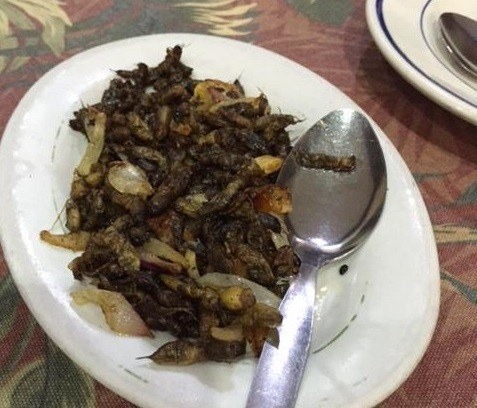What Filipino Delicacy Goes Great With Beer, Crunches Like A Pretzel, And Is Likely To Gross Out Anyone Who's Not A Local?
I'm no Andrew Zimmern, but I'm usually up for a little culinary adventure. In the Philippines, I got the opportunity to sample kamaru, a popular delicacy, that I'm happy to report doesn't, even when fried, taste just like chicken.
In Pampanga, one of 81 provinces in the Philippines, kamaru is a staple, like cheese in Wisconsin or steak in Texas. Locals call their favorite restaurants before showing up to make sure the seasonal appetizer is on that day's menu.
Everybody's Café, a 60-year-old eatery in San Fernando that specializes in home-cooked food characteristic of the Kapampangan ethnic group, did have kamaru on the menu the night I was there. My hosts insisted I try it, but not before explaining that kamaru, if I really must know, are mole crickets. I paused for five seconds, gulped and muttered with a slightly greenish face, 'I'm in."
Although there are many ways to eat these burrowing crickets, which are harvested in rice fields, they're often cooked adobo style, which means they're marinated in vinegar, crushed garlic, and soy sauce. Most cooks remove the wings and legs, but some prefer the texture.
I opted for the non-textured, deep-fried version, which was light and crispy, chocolate brown, and served with tomatoes and rice.
The good news is that kamaru is quite nutritious. One five-ounce serving has virtually no fat and provides 28 percent of a human's daily protein needs. Entomophagy (the consumption of insects as food) has existed throughout human history and, according to people who study these things, could provide a viable answer to world hunger. During the season, you can get a one-kilogram bag of kamaru for about a dollar in Pampanga.
While I can say with some surety that I won't be campaigning for my hometown restaurants to add kamaru to their menus, I will admit that its crunchy saltiness is the perfect accompaniment for a San Miguel beer.
